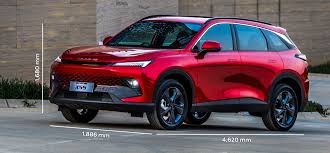Introduction
Beijing, the capital of China, is a city that seamlessly blends ancient history with modern innovation. Among its many symbols of progress, the “Beijing Car” stands out as a testament to the city’s evolution in transportation, technology, and culture. The term “Beijing Car” not only refers to the vehicles produced by Beijing Automotive Group (BAIC), one of China’s largest state-owned automobile manufacturers, but also embodies the spirit of a city that is constantly on the move. This article explores the significance of the Beijing Car, its historical roots, technological advancements, and its role in shaping the future of mobility in China and beyond.

A Legacy of Innovation: The History of Beijing Automotive Group
The story of the Beijing Car begins in 1958, when the Beijing Automotive Works (BAW) was established. As one of China’s earliest automobile manufacturers, BAW played a pivotal role in the country’s industrialization efforts. The first vehicle produced by BAW, the Beijing BJ212, was a rugged off-road vehicle designed for military use. Its durability and versatility made it an iconic symbol of China’s automotive industry during the mid-20th century.
Over the decades, BAIC expanded its portfolio to include passenger cars, commercial vehicles, and electric vehicles (EVs). The company’s commitment to innovation and quality has earned it a reputation as a leader in China’s automotive sector. Today, BAIC is not only a major player in the domestic market but also a growing presence on the global stage, with partnerships and collaborations with international automakers such as Daimler and Hyundai.
The Beijing Car: A Reflection of Modern China
The Beijing Car is more than just a mode of transportation; it is a reflection of China’s rapid economic growth and technological advancement. As Beijing transformed into a global metropolis, the demand for efficient, reliable, and stylish vehicles grew. BAIC responded to this demand by producing cars that cater to a wide range of consumers, from affordable compact cars to luxury sedans and SUVs.
One of the most notable examples of the Beijing Car is the BAIC BJ40, a modern iteration of the classic BJ212. The BJ40 combines rugged off-road capabilities with contemporary design and advanced technology, making it a popular choice among urban adventurers and outdoor enthusiasts. Similarly, the BAIC Senova series offers sleek, fuel-efficient vehicles that appeal to young professionals and families.
Driving the Future: BAIC’s Commitment to Electric Vehicles
As the world shifts toward sustainable transportation, BAIC has positioned itself at the forefront of the electric vehicle revolution. The company’s subsidiary, BAIC BluePark New Energy Technology, is dedicated to developing and producing EVs that meet the needs of environmentally conscious consumers. Models such as the BAIC EU5 and EX3 have gained popularity for their impressive range, cutting-edge features, and competitive pricing.
Beijing’s commitment to reducing air pollution and carbon emissions has further accelerated the adoption of electric vehicles in the city. With government incentives and a growing network of charging stations, Beijing has become a hub for EV innovation. BAIC’s electric cars are not only a practical choice for urban commuters but also a symbol of China’s dedication to a greener future.
Cultural Significance: The Beijing Car in Popular Imagination
The Beijing Car holds a special place in the cultural imagination of the Chinese people. For many, it represents national pride and the country’s ability to compete with global automotive giants. The iconic design of the BJ212, for instance, evokes nostalgia for a bygone era while reminding us of China’s resilience and determination.
In popular media, the Beijing Car has been featured in films, television shows, and advertisements, often symbolizing progress, ambition, and the spirit of exploration. Its presence on the streets of Beijing is a constant reminder of the city’s dynamic energy and its role as a leader in innovation.
Challenges and Opportunities Ahead
Despite its successes, the Beijing Car faces challenges in an increasingly competitive and globalized automotive industry. Rising consumer expectations, technological disruptions, and environmental concerns require BAIC to continuously innovate and adapt. The company’s ability to embrace new technologies such as autonomous driving, artificial intelligence, and connected vehicles will be crucial to its long-term success.
At the same time, the Beijing Car presents opportunities for collaboration and growth. By leveraging its expertise in electric vehicles and forging partnerships with international companies, BAIC can expand its reach and influence in global markets. The Belt and Road Initiative, China’s ambitious infrastructure and trade project, also offers new avenues for the Beijing Car to connect with consumers in emerging markets.
Conclusion: The Road Ahead for the Beijing Car
The Beijing Car is more than just a product of engineering; it is a symbol of China’s journey from a developing nation to a global powerhouse. From its humble beginnings as a military vehicle to its current status as a leader in electric mobility, the Beijing Car embodies the spirit of innovation, resilience, and ambition that defines modern China.
As Beijing continues to grow and evolve, so too will the Beijing Car. Whether navigating the bustling streets of the capital or exploring new horizons abroad, the Beijing Car will remain a driving force in shaping the future of transportation. For the people of Beijing and beyond, it is not just a vehicle—it is a symbol of progress, a testament to the city’s enduring legacy, and a beacon of hope for a sustainable and connected world.

